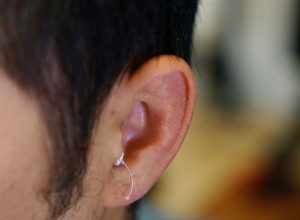Creating blogs and sites are very simple tasks but to attain success with them requires a lot of efforts as well as awareness about the world of SEO. Search engine optimization plays a significant role in the success of a blog or a website. So, in order to gain profit with this tool, you should have knowledge about some of the basic SEO terms.
1. PageRank
It is a kind of calculation used by Google for estimating the relative importance of pages around the web. The importance of a page is directly related to the number of links on that page.
2. Backlink
It is also referred as inlink or just link. Backlink is basically a hyperlink on another website which takes you back to your own website. Backlinks play a significant role in SEO as they directly impact the search rankings of the websites.
3. Search Engine Marketing

It’s popularly known as SEM. As the name itself suggests, it helps in marketing services or products with the help of search engines. SEM is mainly divided into two parts called as SEO and PPC. SEO optimizes websites and helps in the visibility of its pages in organic search results and PPC means Pay-Per-Click which deals with purchasing clicks from search engines.
4. Anchor text
The anchor text is a part of a backlink which can be clicked on the web page. Anchor texts rich with keywords play an important role in SEO as Google associates the keywords with the content of the website. For example, if you have a blog on skin care, it would help in improving the search rankings of your blog if some of your backlinks had “skin care” as their anchor texts.
5. Meta Title Tag
It’s the title of a web page which is also one of the most important factors inside Google’s search algorithm. So, your title tag should be unique and include the main keywords of the page. The title tag of any web page can be seen on top of the browser while navigating it.
6. Meta Tags
These give more information to the search engines regarding the content of your pages. As meta tags are placed inside the HEAD section of the HTML code due to which human visitors remain unable to view them.
7. Search Algorithm
It’s the most useful tool used for finding out the most relevant web pages for any search. As per Google, more than 200 factors are taken into consideration for this algorithm which includes the PageRank value, the title tag, the age of the domain, the meta tags, the content of the website and many other factors.
8. SERP
It refers to Search Engine Results Page. It’s basically the page you get when you search for a specific keyword on Google or on other search engines. The search traffic received by your website depends on the rankings inside the SERPs.
9. Sandbox
All the newly discovered websites of Google are placed in a separate index called sandbox. The websites which are in the sandbox don’t show in the search results during normal Google search. The website is moved out of the sandbox and placed in the main index only after it’s verified by Google as a legitimate website.
10. Keyword Density
The keyword density of a page can be calculated by dividing the number of times that keyword is used in a specific page by the total number of words in that page. As per the early algorithms, Keyword density was considered to be an important SEO factor however, that’s not the case now.
Apart from this, there are some other popular SEO terms like keywords stuffing, cloaking and robots.text. As keyword density had a major impact on early search algorithms, webmaster used to take the benefit by artificially increasing the keyword density inside their websites. This kind of gaming used by the webmasters is called keyword stuffing. However, it won’t help you now as Google even penalizes for such acts.
Cloaking is a kind of spamming which makes the same web page show different content to search engines and to human visitors in order to get the page ranked for specific keywords. This method uses the incoming traffic for the promotion of the unrelated products or services. Robots.txt as the name itself suggests is a kind of file which gives information to the search robots about the structure of a website.
Disclosure: We might earn commission from qualifying purchases. The commission help keep the rest of my content free, so thank you!



